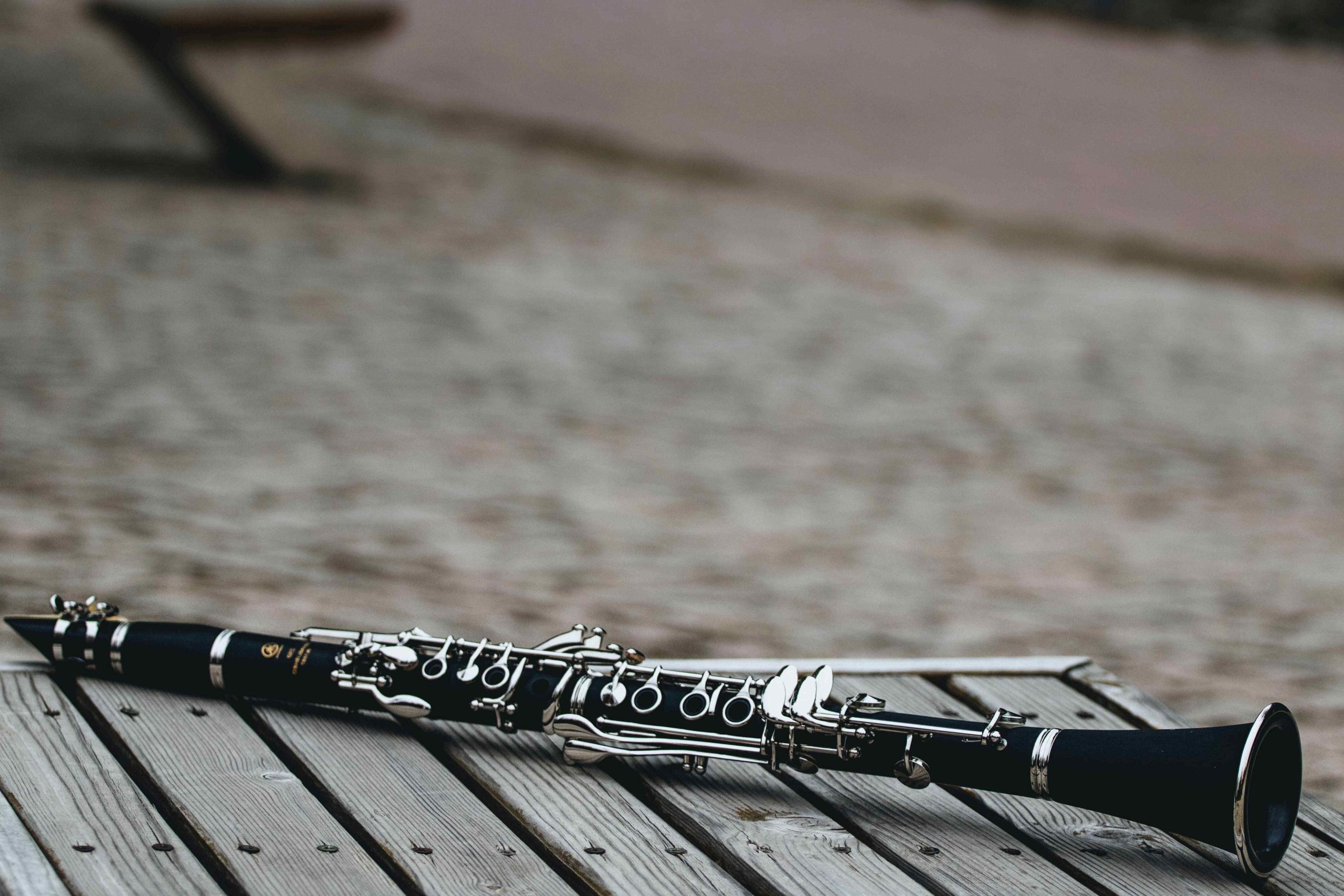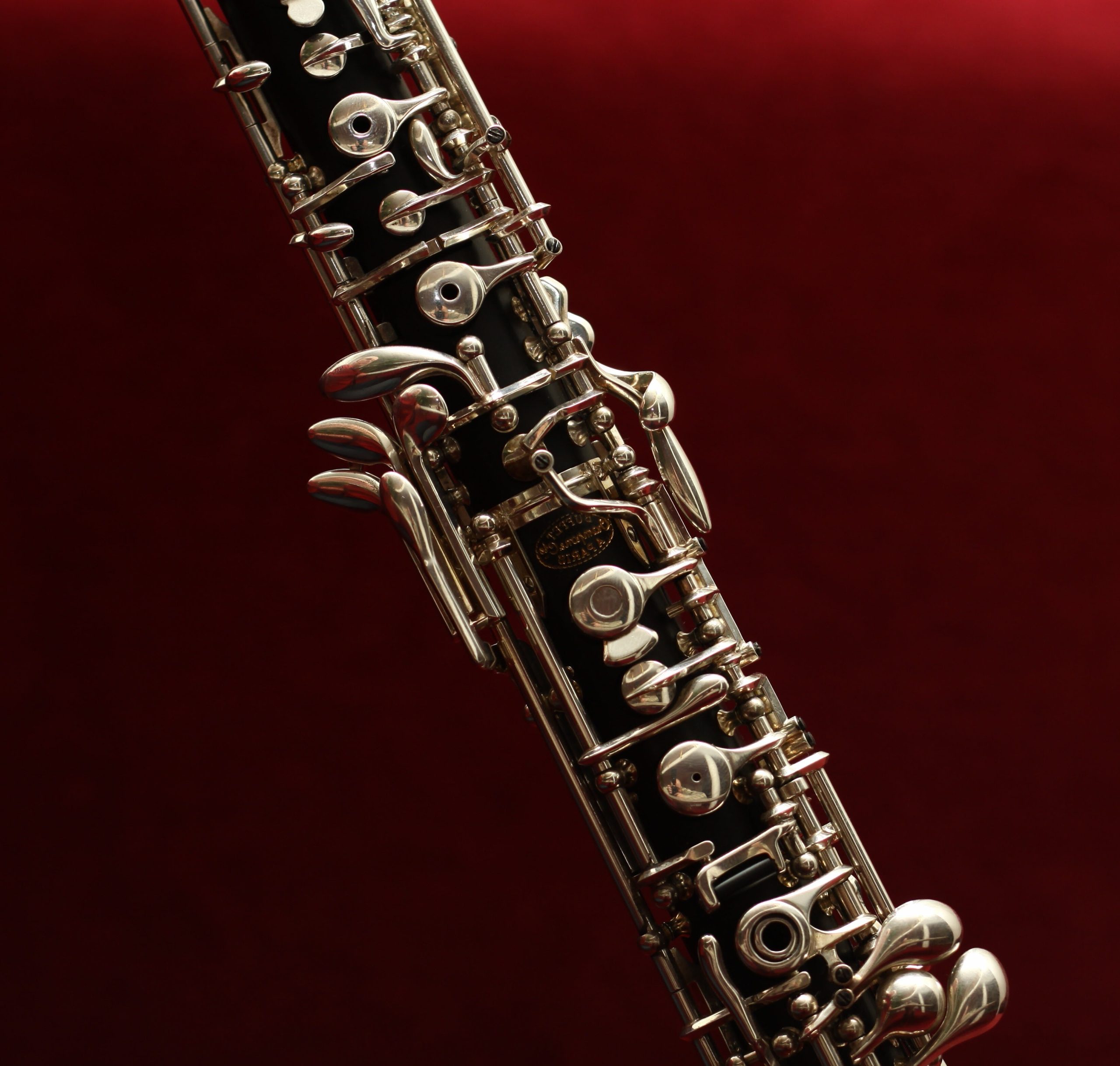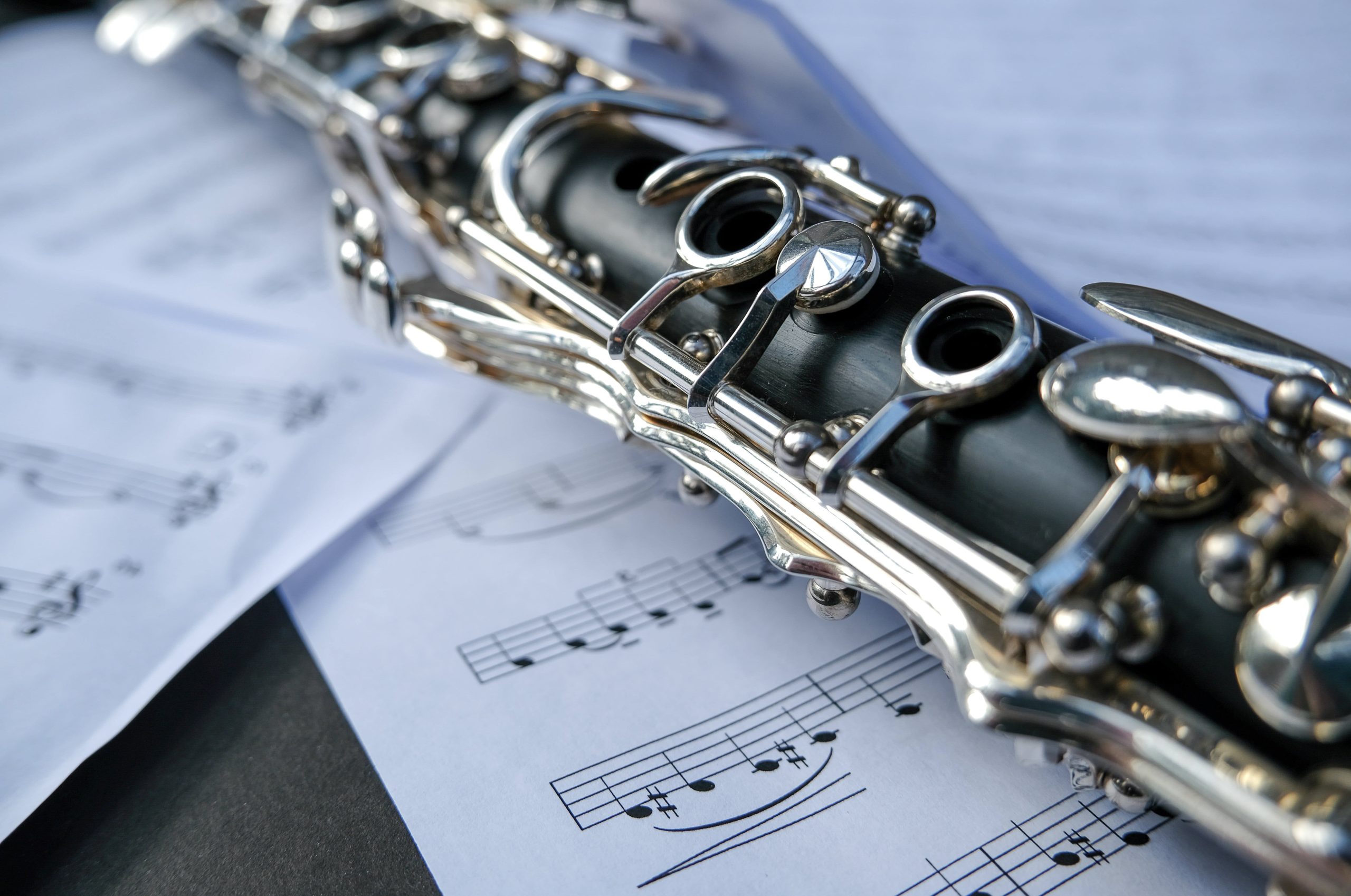Table of Contents
The oboe is a beautiful and versatile woodwind instrument that is known for its unique and melodic sound. Whether you are a beginner or an experienced musician, finding the right oboe is essential to achieving the best possible sound and performance. With so many different brands and models on the market, it can be overwhelming to know where to start. In this article, we will take a look at the top 10 best oboes available today. From beginner to professional models, we will provide an overview of each oboe, its features, and its overall performance. This guide will help you make an informed decision when it comes to selecting the best oboe for your needs and skill level. So, whether you’re looking for a new instrument to learn on or a top-of-the-line professional model, you’re sure to find the perfect oboe for you on this list.
- Yinfente Professional Oboe C key left F Resonance Semi-automatic – $489.00 – 8/10 – The Yinfente Professional Oboe is a left-handed oboe with a C key and a forked-F resonance key. It features semi-automatic octave keys and trill keys made of nickel silver and copper-nickel alloy. This oboe is made of ebonite wood and has been tested for good condition and professional level intonation adjustments. It comes with a case and case cover for easy transportation. If you need a fully automatic system, please contact the seller.
- Glory Oboe C Key Cupronickel Plated Silver Woodwind – $399.99 – 7.2/10 – The Glory Oboe is a C key oboe with a cupronickel plated silver finish. It is a modern style oboe made of silver and is perfect for beginner level players. It is a Woodwind musical instrument and is available at a price of $399.99 on Amazon. It has an overall rating of 7.2/10. It is an affordable option for those who are looking to start learning to play the Oboe.
- Rochix Oboe Professional Performance Level RHG13 Redwood Body Gold Plated Semi Automatic C Tone with 2 Reeds – $789.99 – 7.8/10 – The Rochix Oboe is a professional performance level instrument with a redwood body and gold plated keys. It is a semi-automatic C tone oboe and comes with 2 reeds, a cleaning cloth, an oboe swab, a thumb rest, a pair of gloves, a screwdriver, and a case. This oboe is of German quality and is trustworthy. It also comes with a 1-year warranty period. It is an ideal choice for professionals and advanced players looking for a high-quality oboe.
- Rochix Oboe Beginner Student Level SF15 Composite Wood Body Silver Plated Full Automatic C Tone – $489.99 – 8.2/10 – The Rochix Oboe is a beginner student level instrument with a composite wood body and silver plated keys. It is a full-automatic C tone oboe and comes with 2 reeds, a cleaning cloth, an oboe swab, a thumb rest, a pair of gloves, a screwdriver, and a case. This oboe is of German quality, trustworthy and is perfect for students just starting to learn the oboe. It also comes with a 1-year warranty period. It is an ideal choice for beginners looking for a high-quality and affordable oboe.
- Yinfente Maple Wood Bassoon C Key 26 Keys – $1,339.00 – 7.4/10 – The Yinfente Maple Wood Bassoon is a C key instrument with 26 keys. It is made of Maple wood and is a high-quality product made by a company that also produces OEM products for famous companies. It has a brilliant sound and is a C tone Bassoon. It comes with a free bassoon case and accessories. It is a great choice for professional players who are looking for a high-quality and well-crafted Bassoon.
- Selmer 1492B Student Oboe – $3,389.00 – 10/10 – The Selmer 1492B Student Oboe is a high-end student model oboe with a Resonite body bell. It has a Basic Conservatory System and silver-plated keys. It comes with a case for easy transportation. This Oboe is manufactured by Selmer, a company well known for producing high-quality wind instruments making it a great option for students looking for a high-quality instrument to learn on. The Selmer 1492B is a great choice for student oboists who want to start with a high-quality instrument that is built to last.
- Yamaha YOB-241 Student Oboe – $3,354.00 – 9.2/10 – The Yamaha YOB-241 Student Oboe is a high-end student model oboe with an ABS resin body bell. It has a Simplified Conservatory System and silver-plated keys. It comes with a case for easy transportation. This Oboe is manufactured by Yamaha, a company well known for producing high-quality wind instruments. The Yamaha YOB-241 is a great choice for student oboists who want to start with a high-quality instrument that is built to last and is from a well-known brand in the industry.
- J. Michael ob1500 Oboe – $1,151.26 – 10/10 – The J. Michael ob1500 Oboe is a high-quality instrument in the key of C. It is made from a combination of ebony and ABS (Acrylonitrile Butadiene Styrene) materials. It is a modern style instrument that is well-crafted and produces a brilliant sound. It is manufactured by J. Michael, a company known for producing high-quality wind instruments. The J. Michael ob1500 is a great choice for those who want to invest in a well-crafted, high-quality oboe that will last for years to come.
- RS Berkeley OB400 Elite Series Oboe – $1,495.00 – 8/10 – The RS Berkeley OB400 Elite Series Oboe is a high-quality instrument, made with a beautiful ebonite body and silver-plated keys. It features blue steel springs and tapered pivot screws for enhanced durability and ease of use. The oboe comes with a durable, portable storage case with a shoulder strap and many accessories, such as a reed, reed case, and pad saver, making it ready to play right out of the box. It is part of the RS Berkeley’s Elite Series collection of woodwind instruments, known for their high-quality construction and sound.
- Yamaha YOB-441 Intermediate Oboe – $3,947.99 – 6/10 – The Yamaha YOB-441 Intermediate Oboe is a high-quality instrument, made with grenadilla wood body. It features a Modified Conservaty System and silver-plated keys that offers a great playability and sound. The oboe comes with upper joint and bell, it is intermediate level instrument, designed to provide a step-up in playability and sound quality for advancing students. It is manufactured by Yamaha, a company known for producing high-quality wind instruments.
Frequently Asked Questions
How is an oboe different from other wind instruments?
An oboe is different from other wind instruments because it has a double reed, a narrow conical bore, and a unique sound.
What is the proper technique for playing an oboe?
Proper technique for playing an oboe includes proper breath support, finger positioning, and reed adjustment.
What is the range of notes that an oboe can play?
The range of notes that an oboe can play is from Bb3 to C7, with a total of 2 octaves and a half.
How do I care for and maintain my oboe?
To care for and maintain an oboe, it should be cleaned regularly and stored in a case to protect it from damage. It is also important to keep the instrument in a stable environment with consistent temperature and humidity.
What are the different types of oboes available?
Different types of oboes available include the standard oboe, the oboe d’amore, and the English horn.
What is the best type of reed to use for an oboe?
The best type of reed to use for an oboe would depend on the player’s personal preference and skill level. Some popular types of reeds include French style, German style, and American style.
How do I adjust the reed on my oboe?
To adjust the reed on an oboe, the player can make adjustments to the reed’s shape and thickness to achieve the desired sound.
What is the difference between a student oboe and a professional oboe?
A student oboe is typically less expensive and made with less expensive materials than a professional oboe. Professional oboes are made with higher quality materials and are designed for advanced players.
How do I properly assemble and disassemble my oboe?
To properly assemble and disassemble an oboe, it is important to follow the manufacturer’s instructions and handle the instrument with care.
What is the price range for a new or used oboe?
The price range for a new or used oboe can vary widely, with student models starting at around $1,000 and professional models costing several thousand dollars.
How long does it take to learn to play the oboe?
It can take several years to learn to play the oboe at a basic level, and many years of practice to become proficient.
Can an oboe be played by a left-handed person?
An oboe can be played by a left-handed person, but it may require a specially made left-handed instrument or adjustments to a standard oboe.
What are the best brands of oboes?
Some popular brands of oboes include Yamaha, Selmer, and Fox.
Oboe Selection Tips

Oboes are beautiful and versatile instruments that can add a unique sound to any ensemble or performance. However, selecting the right oboe can be a daunting task, especially for beginners. With so many options on the market, it can be difficult to know where to start. In this article, we will provide some tips for selecting the perfect oboe for you or your child.
First and foremost, it is important to determine your skill level and intended use for the oboe. Are you a beginner looking for a student-level instrument, or are you a professional in need of a high-quality oboe for performances? Student-level oboes are typically less expensive and made with less expensive materials, while professional oboes are typically made with higher quality materials and have a wider range of notes.
Another important factor to consider is the material of the oboe. Oboes can be made of wood, plastic, or composite materials. Wooden oboes are typically more expensive, but they offer a warmer, more natural sound. Plastic oboes are less expensive and more durable, but they may not have the same tone as a wooden oboe. Composite oboes are a mixture of materials and offer a balance of cost and sound quality.
The key system is also an important factor to consider when selecting an oboe. Oboes come in several key systems, including the basic conservatory system, the modified conservatory system, and the full conservatory system. The basic conservatory system is the most common and is recommended for beginners, while the modified and full conservatory systems offer more advanced players a wider range of notes and greater flexibility.
When trying out oboes, it is important to pay attention to the sound quality and playability. A good oboe should have a clear, even sound across all registers, and should be easy to play with good intonation. It’s also important to make sure that the oboe fits comfortably in your hands and that the keys are easy to press.
Types of Oboes
Oboes are a type of woodwind instrument that have been around for centuries. They are known for their distinctive sound and are often used in orchestral and chamber music. Oboes come in a variety of types, each with their own unique characteristics. In this article, we will explore the different types of oboes available and their specific features.
The first type of oboe is the standard oboe. This is the most common type of oboe and is often used in school bands and orchestras. The standard oboe is usually made of wood, although some modern oboes are made of plastic. Standard oboes typically have a range of Bb3 to B6 and are played using a double reed.
The next type of oboe is the English horn. This type of oboe is similar to the standard oboe, but is larger in size and has a lower pitch. The English horn is typically used in orchestral music and is known for its deep, rich sound. English horns are usually made of wood and have a range of F3 to F6.
Another type of oboe is the oboe d’amore. This type of oboe is similar to the standard oboe but is slightly smaller and has a softer, more delicate sound. Oboes d’amore are typically used in chamber music and are known for their ability to blend well with other instruments. Oboes d’amore are usually made of wood and have a range of A3 to A6.
The bass oboe is another type of oboe that is larger in size and has a lower pitch. The bass oboe is typically used in orchestral music and is known for its deep, rich sound. Bass oboes are usually made of wood and have a range of C3 to C6.
Oboe Brands
When it comes to choosing an oboe, one of the most important decisions you will make is which brand to select. There are many different oboe brands available on the market, each with their own unique features and characteristics. In this article, we will explore some of the most popular and well-regarded oboe brands, and what sets them apart from one another.
One of the most well-known and respected oboe brands is Yamaha. Yamaha oboes are known for their excellent craftsmanship, durability, and superior sound quality. They offer a wide range of oboes to suit different skill levels and budgets, from student models to professional-grade instruments. Some of their most popular models include the Yamaha YOB-241 student oboe and the Yamaha YOB-441 intermediate oboe.
Another highly-regarded brand is Selmer. Selmer oboes are known for their rich, full sound, and are often considered the “gold standard” of oboes. They have a wide range of models available, including the Selmer 1492B student oboe and the Selmer 1492F professional oboe. Selmer oboes are considered some of the best oboes on the market, and are often used by professional players.
Buffet Crampon is a French brand of oboes that is also highly respected in the industry. They are known for their excellent craftsmanship, and many of their oboes are made from grenadilla wood, which is considered to be the best wood for making oboes. Buffet Crampon oboes are often considered the “Rolls Royce” of oboes and are used by many professional players. Some popular models include the Buffet Crampon E11 and the Buffet Crampon Greenline E13.
Parts of an Oboe

The oboe is a beautiful and complex instrument, made up of many different parts. Understanding the function and proper maintenance of each part is crucial for any oboist, whether they are a beginner or a seasoned professional. In this article, we will take a look at the main parts of an oboe and what you need to know about each one.
The body of the oboe is the main part of the instrument, and it is typically made of wood, such as grenadilla or plastic. The body is where the sound is produced and amplified. It is also where the reed is placed. The body is composed of three main parts: the upper joint, the lower joint, and the bell. The upper joint is the part of the body where the left hand is placed, and it contains the majority of the finger holes and keys. The lower joint is the part of the body where the right hand is placed, and it also contains finger holes and keys. The bell is the flared end of the oboe, and it amplifies the sound produced by the reed.
The reed is the heart of the oboe, and it is made of thin strips of cane that are fastened together. The reed vibrates against the mouthpiece, creating the sound of the oboe. Oboists typically use two or three reeds at a time, as reeds can wear out quickly. When selecting a reed, it is important to consider the strength of the reed, as well as the quality of the cane. Some oboists prefer a softer reed for a more mellow sound, while others prefer a harder reed for a brighter sound.
How to Clean a Oboe
Cleaning an oboe is an important aspect of maintaining the instrument, ensuring it stays in good condition and continues to produce a high-quality sound. Keeping the oboe clean can also help to prolong its lifespan. Here are some tips on how to properly clean an oboe.
First, it’s important to note that oboes should be cleaned after each use. This includes wiping down the exterior of the instrument with a soft, dry cloth, as well as cleaning the interior of the oboe. The following steps should be taken to clean the interior of the oboe:
Disassemble the oboe: Carefully disassemble the oboe, removing the reed and the cork from the top joint. Be sure to keep the parts in a safe place and in the correct order, so that you can reassemble the oboe later.
Use a cleaning swab: Use a cleaning swab, also known as an oboe swab, to clean the inside of the oboe. The swab is designed to clean the inside of the oboe without scratching or damaging the instrument. Make sure to clean the swab before using it, so that it is free of dust and debris.
Clean the reed: Use a reed cleaner or a soft-bristled brush to clean the reed. Remove any debris or buildup that may have accumulated on the reed. This will help to ensure that the reed is producing the best possible sound.
Clean the keys: Use a soft-bristled brush or a small, soft-bristled toothbrush to clean the keys. Make sure to clean the inside and outside of the keys, as well as the springs and the rods. Be sure to use a small amount of mild soap and warm water, if needed.
Dry the oboe: Once you have finished cleaning the oboe, make sure to dry it thoroughly.
How to Learn to Play the Oboe (Step by Step)
Learning to play an oboe can be a challenging but rewarding experience. The oboe is a woodwind instrument that is known for its unique and expressive sound. It is often used in classical music, but can also be found in other genres such as jazz and pop. If you’re interested in learning to play the oboe, here are some tips to help you get started.
First, it’s important to find a qualified oboe teacher. Look for someone who has experience teaching the oboe and who has a good reputation. They should be able to teach you the proper technique for playing the oboe and help you understand the basics of music theory. They will also be able to give you feedback on your playing and help you improve over time.
Before you start playing the oboe, it’s important to understand the different parts of the instrument. The oboe is made up of several different parts, including the reed, the mouthpiece, the upper joint, the middle joint, the lower joint, and the bell. Each of these parts plays an important role in the sound and function of the oboe. Make sure you understand how to properly assemble and disassemble your oboe to ensure it is in good working condition.
Once you understand the different parts of the oboe, it’s time to start learning the basics of playing. Start by learning how to hold the oboe and how to blow into the reed. The proper technique for blowing into the reed is important because it will affect the sound of the oboe. Once you’ve mastered this, you can start learning how to play different notes. The range of notes that an oboe can play is quite large, so it can take some time to learn all the different notes.
History of the Oboe
The oboe is a woodwind instrument that has been around for centuries. Its origins can be traced back to ancient Egypt and Greece, where similar instruments were played in orchestras and used in religious ceremonies. The oboe as we know it today, however, did not develop until the 17th century in France.
The first oboes were made of wood and had a conical bore, similar to the modern English horn. They were primarily used in outdoor settings, such as hunting and military events, due to their loud and piercing sound. Over time, the oboe evolved to have a cylindrical bore, which made it suitable for indoor use as well.
During the Baroque period (1600-1750), the oboe became a popular instrument in orchestras and chamber music. Composers such as Bach and Handel wrote many solo and ensemble pieces for the oboe, showcasing its versatility and range. The instrument continued to evolve during the Classical period (1730-1820) with the addition of keys to improve its range and playability.
The modern oboe, with its conservatory system of keys, was developed in the 19th century by French instrument makers. This system allowed for a wider range of notes and improved tone quality, making the oboe a more versatile and expressive instrument.
During the 20th century, the oboe continued to evolve with the introduction of new materials and manufacturing techniques. Many oboes today are made from synthetic materials such as plastic and resin, which are more durable and resistant to changes in temperature and humidity.
David Mahon is research assistant and part-time writer for SingersRoom.com. David has always enjoyed music and helping others reach their full potential.

